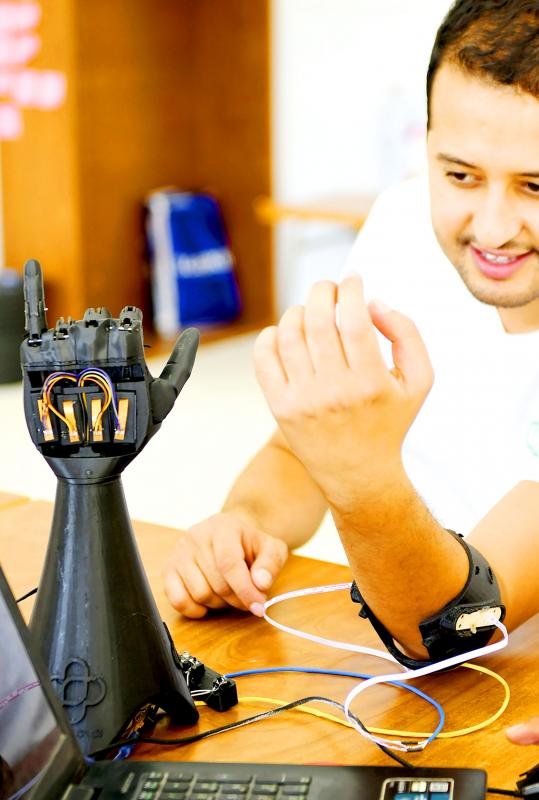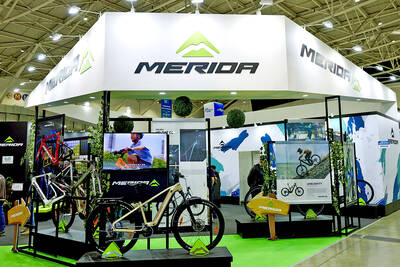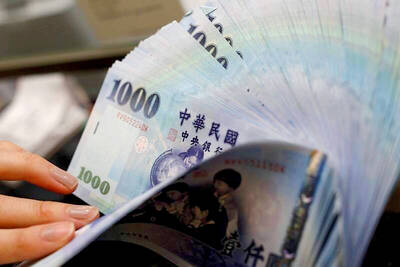A Tunisian start-up is developing a 3D-printed bionic hand, hoping the affordable and solar-powered prosthetic will help amputees and other disabled people across Africa.
Unlike traditional devices, the artificial hand can be customized for children and young people, who otherwise require an expensive series of resized models as they grow up.
The company Cure Bionics also has plans to develop a video game-like virtual reality system that helps youngsters learn how to use the artificial hand through physical therapy.

Photo: AFP
Mohamed Dhaouafi, the 28-year-old founder and chief executive officer of Cure Bionics, designed his first prototype while still an engineering student in his home city Sousse.
“One team member had a cousin who was born without a hand and whose parents couldn’t afford a prosthesis, especially as she was still growing up,” he said. “So we decided to design a hand.”
Dhaouafi launched his start-up in 2017 from his parents’ home, at a time when many of his classmates chose to move abroad seeking higher salaries and international experience.
“It was like positive revenge,” he said. “I wanted to prove I could do it. I also want to leave a legacy, to change people’s lives.”
Dhaouafi pointed to hurdles in Tunisia, where it can be hard or impossible to order parts via large online sales sites.
There is a lack of funding and, he said: “We lack visionaries within the state.”
However, by pooling money raised through sponsored competitions and seed investment from a US company, he was able to recruit four young engineers.
They are now fine-tuning designs, writing code and testing the artificial hand.
‘LIKE SPIDER-MAN’
The device works with sensors attached to the arm that detect muscle movement, and artificial intelligence-assisted software that interprets them to transmit instructions to the digits.
The hand itself has a wrist that can turn sideways, a mechanical thumb, and fingers that bend at the joints in response to the electronic impulses.
To teach youngsters how to use them, Cure has been working on a virtual-reality headset that “gamifies” the physical therapy process.
“Currently, for rehabilitation, children are asked to pretend to open a jar, for example, with the hand they no longer have,” Dhaouafi said. “It takes time to succeed in activating the muscles this way. It’s not intuitive, and it’s very boring.”
“We get them to climb up buildings like Spider-Man, with a game score to motivate them, and the doctor can follow up online from a distance,” he said.
Meanwhile, 3D printing makes it possible to personalize the prosthesis like a fashion accessory or “a superhero’s outfit,” Dhaouafi said.
Cure hopes to market its first bionic hands within a few months, first in Tunisia and then elsewhere in Africa, where more than three-quarters of people in need have no access to them, according to the WHO.
“The aim is to be accessible financially, but also geographically,” Dhaouafi said.
The envisaged price of abotu US$2,000 to US$3,000 is substantial, but a fraction of the cost of bionic prostheses imported from Europe.
LEAPFROG TECHNOLOGY
Cure also aims to manufacture as close as possible to the end users, with local technicians measuring the patients and then printing individually fitted devices.
“An imported prosthesis today means weeks or even months of waiting when you buy it, and again with each repair,” the inventor said.
The bionic hand is made of Lego-like parts that can be replaced if damaged or to match a child’s physical growth.
It can also be solar-powered via a photovoltaic charger for use in regions without a reliable electricity supply.
The 3D printing of rudimentary prostheses started about a decade ago and is becoming standard.
It is not a magic solution because specialized medical know-how is still crucial, said Jerry Evans, who heads Nia Technologies, a Canadian non-commercial organization that helps African hospitals manufacture 3D-printed lower limbs.
He said that “3D printing is still in its early stages, but it is a major game changer in the field of prosthetics and orthotics.”
“Developing countries will probably leapfrog to these technologies because the cost is much lower,” he added.

Merida Industry Co (美利達) has seen signs of recovery in the US and European markets this year, as customers are gradually depleting their inventories, the bicycle maker told shareholders yesterday. Given robust growth in new orders at its Taiwanese factory, coupled with its subsidiaries’ improving performance, Merida said it remains confident about the bicycle market’s prospects and expects steady growth in its core business this year. CAUTION ON CHINA However, the company must handle the Chinese market with great caution, as sales of road bikes there have declined significantly, affecting its revenue and profitability, Merida said in a statement, adding that it would

Greek tourism student Katerina quit within a month of starting work at a five-star hotel in Halkidiki, one of the country’s top destinations, because she said conditions were so dire. Beyond the bad pay, the 22-year-old said that her working and living conditions were “miserable and unacceptable.” Millions holiday in Greece every year, but its vital tourism industry is finding it harder and harder to recruit Greeks to look after them. “I was asked to work in any department of the hotel where there was a need, from service to cleaning,” said Katerina, a tourism and marketing student, who would

i Gasoline and diesel prices at fuel stations are this week to rise NT$0.1 per liter, as tensions in the Middle East pushed crude oil prices higher last week, CPC Corp, Taiwan (台灣中油) and Formosa Petrochemical Corp (台塑石化) said yesterday. International crude oil prices last week rose for the third consecutive week due to an escalating conflict between Israel and Iran, as the market is concerned that the situation in the Middle East might affect crude oil supply, CPC and Formosa said in separate statements. Front-month Brent crude oil futures — the international oil benchmark — rose 3.75 percent to settle at US$77.01

RISING: Strong exports, and life insurance companies’ efforts to manage currency risks indicates the NT dollar would eventually pass the 29 level, an expert said The New Taiwan dollar yesterday rallied to its strongest in three years amid inflows to the nation’s stock market and broad-based weakness in the US dollar. Exporter sales of the US currency and a repatriation of funds from local asset managers also played a role, said two traders, who asked not to be identified as they were not authorized to speak publicly. State-owned banks were seen buying the greenback yesterday, but only at a moderate scale, the traders said. The local currency gained 0.77 percent, outperforming almost all of its Asian peers, to close at NT$29.165 per US dollar in Taipei trading yesterday. The